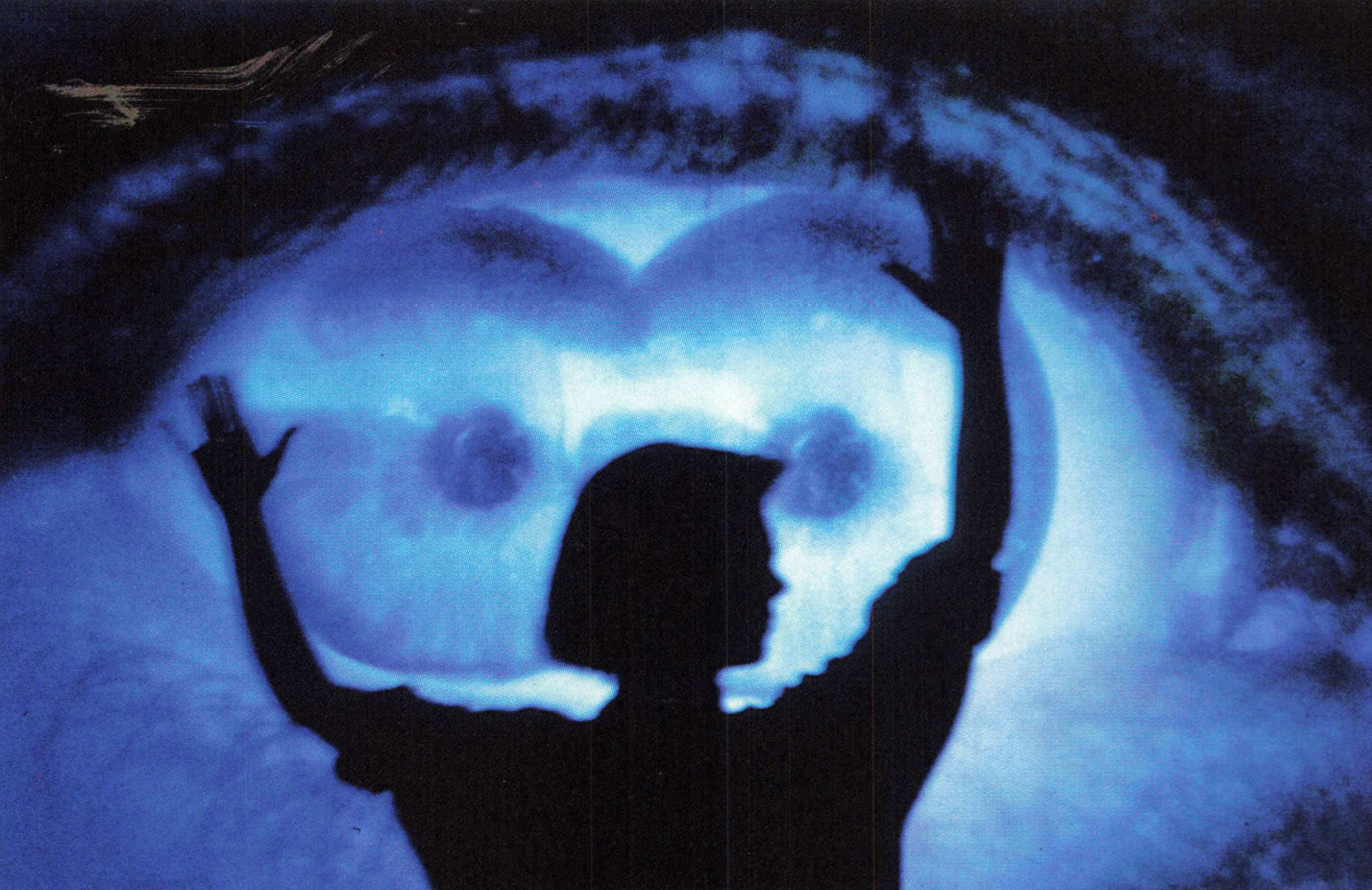“Surface Tension” by Lozano-Hemmer, Ramsay and Bauer
Conference:
Experience Type(s):
Entry Number: 46
Title:
- Surface Tension
Program Title:
- Tomorrow's Realities
Organizer(s)/Presenter(s):
Collaborator(s):
Description:
Introduction
Surface Tension is an active and responsive installation designed to investigate the boundary between the virtual and the real. Using custom-made technology orchestrated by an ultrasonic wand input device, the piece consists of interactive animation and interactive music, both triggered by dance. There are two segments: a) a 45-minute performance where trained dancers use the installation to follow a theatrical narrative, and b) an undefined amount of time for the audience to jam with the system. The performance segment of Surface Tension consists of a dramatic visual, musical, and textual narrative. The thematic focus is not on representing reality or virtuality, but on the effects of “crossing” from one to the other. ls there a boundary between the Virtual and the Real? If so, what is its resistance to transgression? How does the body react to the displacements? The piece resolves with the delegation of judgment to the spectators, by offering the environment for their use.
The Environments
There are three electronic environments in Surface Tension, one for each of the acts of the performance. The actors wear the ultrasonic wand and control the scenes following a narrative (verbal reality). At the end, the spectators are invited to wear the wand and control the environments themselves:
? Surveillance: With frightening precision, a huge eye looks at the person on stage (actor or spectator) using the ultrasonic wand. The interactive animation consists of over 300 photos of a real eye. Events such as blinking, opening in surp1ise, disappearance of the pupil, and responsiveness of the eyelid can be controlled and randomized.
? Oratory: A virtual 3D map for the stage that lets the wand trigger and control words and sentences in sampled sound and in an enormous animated mouth. By dancing around in the space one can actually make speech.
? Identification: The image of the three actors is the canvas for alterations, blurring the line between representation and identity. The scene contains interactive mutations that happen at real-life scale; also, the index finger of a very large fist follows the person on stage, pointing and gesturing “NOT YOU!” or “YOU’RE OK”.
The Technology
Surface Tension features two innovative technologies:
? The Gesture and Media System (GAMS): The main source of interaction in Surface Tension is dance, as monitored in 3D by our custom-made ultrasound device GAMS. The user holds a small wand that affords very accurate computer data about his or her position, velocity, and acceleration, throughout the stage. The device is susceptible even to small movements (two inches), generating music and affecting computer animation in real-time. With GAMS the actor/spectator becomes the mouse for a network of computers.
? Surface VR: A superficial approach to VR, where experience is made out of proximity maps and restricted paths. Surface VR consists of hierarchical hypercube navigation of previously-rendered routes. ln Surface Tension the visual feedback is given by large screen retro-projection and the wand is used for driving the environments.
The Subject
The physical-chemical term Surface Tension refers to the puzzling force that exists at the interface between two immiscible substances (typically two phases of matter), such as water and oil, mercury and air, or iron and milk. The force resists the extension of the boundary of a substance by an amount related to the difference in intermolecular forces in each of the substances. Our piece uses surface tension as a metaphor to shed light on the boundary between cognition (the interior, the real, whatever that may be) and experience (the exterior, the virtual, whatever that may be). The human cognitive apparatus may be described as a collection of surfaces: the retina, the skin, the sheet of taste buds, the tympanum, the neural net. Likewise, the media interface is usually superficial: the screen, the glove, the speaker. I there surface tension at the juncture of these surfaces? By focusing on the interface, by visualizing it, by literally grabbing it with a wand, we hope to cause a disturbance in the way we understand cyberspace. Surface Tension is about a fully-militarized family searching to communicate with each other in the time when everything has been said, done and recorded.
Equipment
? Macintosh llci 36/2,400 Mbytes with Daystar accelerator
? Custom-made MIDI slide transparency controller
? Akai S1000 sampler
? Spx 900 effects processor
? Macintosh running MAX software
? 12-channel mixer
? Electrohome ECP 3000 digital graphics projector
? Covid Interface
? GAMS, Gesture, and Media System (9 to 16, and 20)
? 386 PC with GAMS software and MIF IPC card
? Motorola MC68HC11 chip
? Ultrasound pulse generator
? Sonar pulse preprocessor
? Radio receiver and antenna
? Amplifiers, Speakers, Slide Projectors, Screens, P.A. speakers, Stereo music outlet
? GAMS wand





